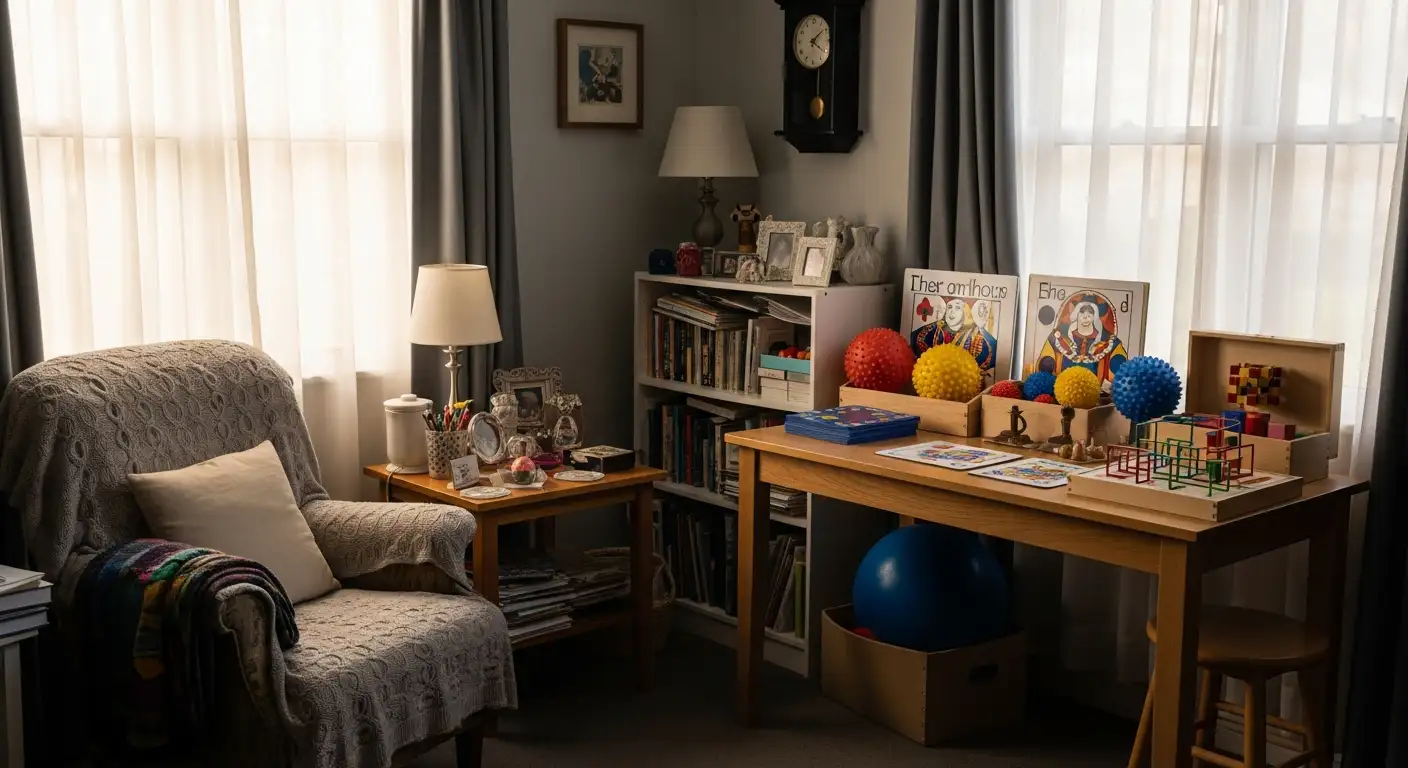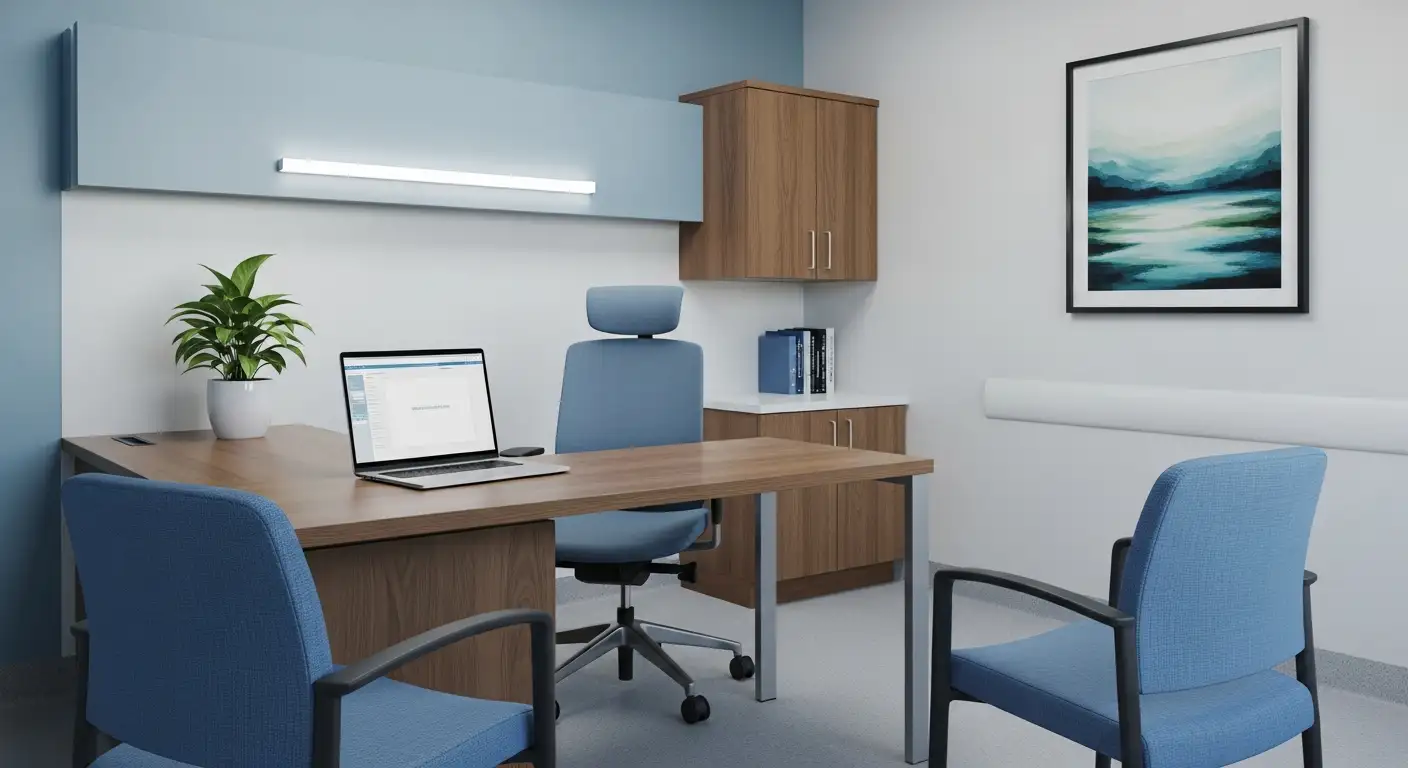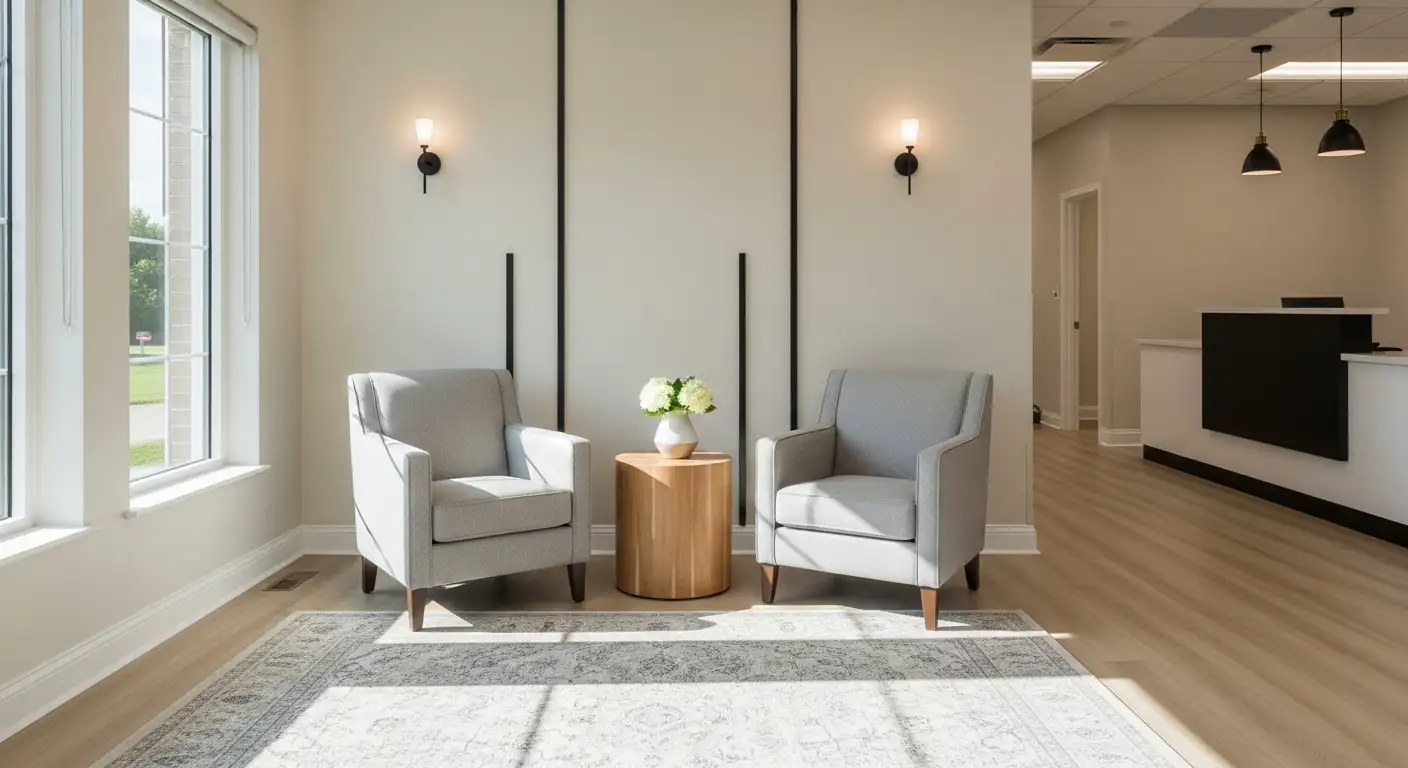Understanding the Evidence Behind CBT Effectiveness in Older Adults
Cognitive-behavioral therapy (CBT) has established itself as a cornerstone in treating mental health conditions across age groups, including the elderly. With the increasing proportion of older adults globally, understanding how CBT adapts to their specific needs and its long-term efficacy becomes vital for clinicians, caregivers, and stakeholders. This article synthesizes the latest scientific research, including systematic reviews, meta-analyses, and longitudinal studies, to provide a comprehensive evaluation of CBT's role in managing depression and anxiety among senior residents in care settings.
Methods for Evaluating CBT's Effectiveness in Older Adults
Assessing how well cognitive-behavioral therapy (CBT) works for older adults involves various approaches. One common method is monitoring symptom change over time. Therapists and clients work together to check progress regularly, often weekly, to see if depressive or anxiety symptoms are reducing.
To make this process more structured, clinicians frequently use symptom checklists. These are standardized forms that clients fill out, indicating the severity and frequency of specific symptoms like worry, sleep issues, or feelings of hopelessness. Tracking these checklists over multiple sessions helps gauge whether therapy is effective.
Client feedback is another vital component. Clients might keep journals or logs of their mood, activity levels, or incidents such as panic attacks or stressful situations. This helps both clients and therapists understand patterns and improvements.
Therapists' clinical observations also play a crucial role. Through observing facial expressions, engagement, or behavioral changes during sessions, therapists can assess progress even beyond what clients report.
Finally, setting specific goals at the outset enables the evaluation of whether these goals are being met. For example, a goal might be improved sleep or increased social activity. Reassessing these aims periodically helps determine the success of the therapy.
In sum, evaluating CBT's pinpointed effectiveness in older adults involves a mix of symptom checklists, client self-reports, therapist observations, and goal achievement tracking. This comprehensive approach ensures that therapy adjustments can be made promptly, optimizing outcomes for this population.
What Research Tells Us About CBT's Efficacy for Older Adults
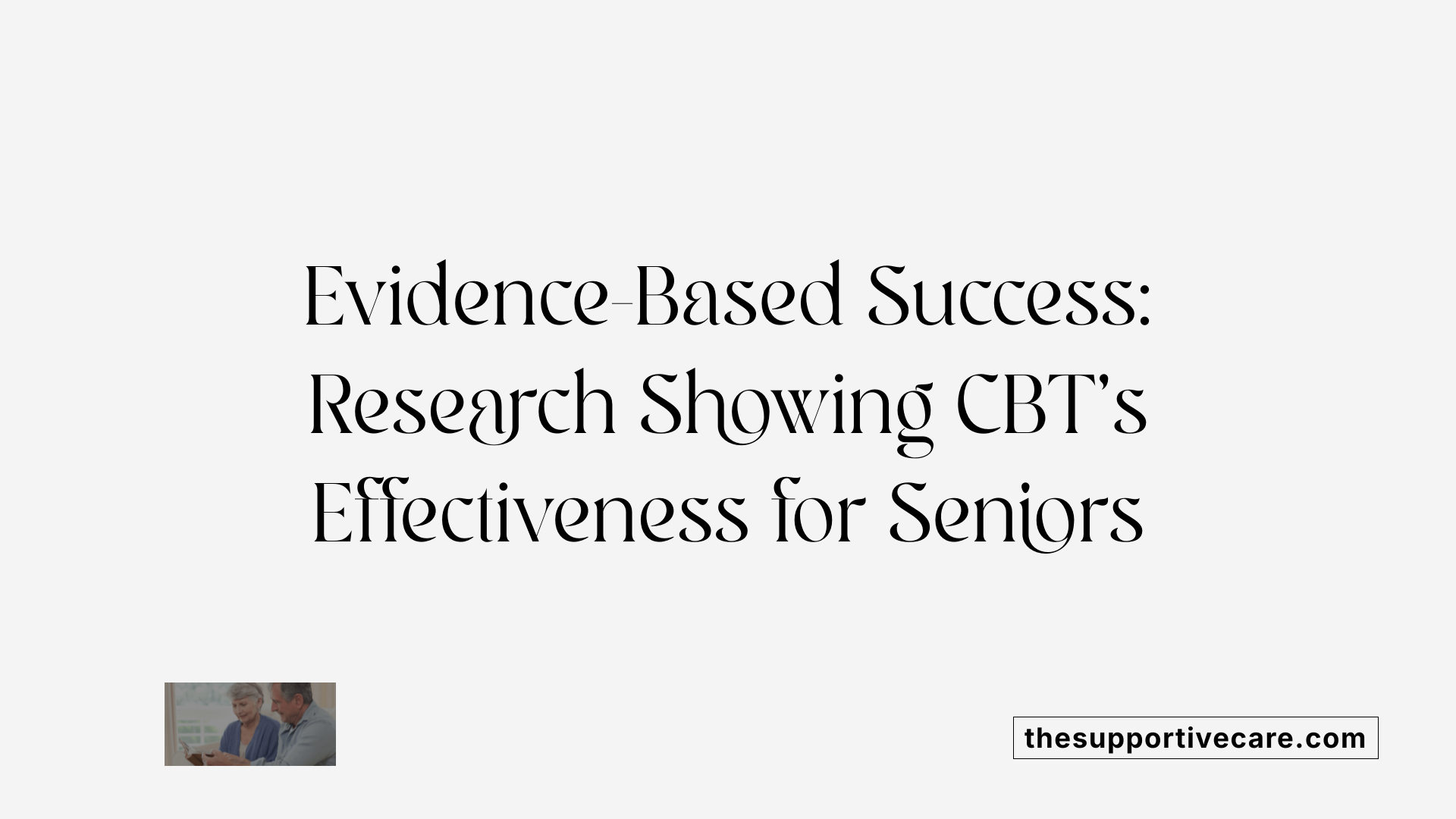
What does scientific research say about the efficacy of cognitive-behavioral therapy (CBT) for older adults?
Meta-analyses and systematic reviews provide strong evidence that CBT is effective in treating mental health issues such as depression and anxiety among older adults. These comprehensive studies have demonstrated that CBT significantly reduces symptoms and improves overall well-being.
Research spanning decades reveals that CBT’s benefits are not only immediate but often last for years. Randomized controlled trials have consistently shown superior outcomes for CBT compared to usual care, wait-list controls, and other forms of therapy in this demographic.
Meta-analyses and systematic reviews
A synthesis of 18 studies focused on CBT in residential aged care showed that pleasant activities scheduling is the most common strategy, with treatment durations ranging from 2 to 24 weeks. Residents and staff reported high satisfaction levels, with an average intervention uptake of nearly 73% and a dropout rate around 20%. Significant positive results were observed in most randomized controlled trials.
Furthermore, a 20-year review of research confirms that CBT produces above-average effect sizes for late-life depression and maintains its efficacy over extended periods, sometimes up to two years post-treatment. Meta-analyses also highlight the importance of combining physical activity therapy (PAT) with CBT to improve fear of falling, showing both short-term and long-term benefits.
Research findings on depression and anxiety treatment
Older adults treated with CBT have shown remarkable improvements in depressive and anxiety symptoms. Studies report remission rates of approximately 58-88% for depression and anxiety disorders, with relapse rates lower than in control groups.
A large pragmatic trial involving over 350 participants indicated that group CBT led to higher remission rates compared to active controls, with significant reductions in symptoms measured by scales like CES-D, PHQ-9, and GAD-7. Notably, improvements were sustained at 12-month follow-ups.
Recent systematic reviews also support the effectiveness of remote CBT approaches, showing significant reductions in anxiety and depressive symptoms with effect sizes around -0.63 and -0.74 respectively, favoring CBT over non-CBT controls.
Content and techniques associated with success
Effective CBT for older adults often includes psychoeducation, behavioral activation, and problem-solving techniques. Behavioral Activation, a core component, is especially recommended for socially isolated or cognitively impaired seniors.
Innovative approaches such as the Lifeskills Approach emphasize resilience-building, focusing on past coping strategies and emotional regulation. Adaptations for cognitive or sensory impairments include simplifying materials, using multimodal presentation, and addressing mobility or health issues.
Therapists with psychology training tend to deliver more successful outcomes, highlighting the importance of therapist expertise in the content rather than delivery style. Tailoring therapy to individual needs—considering cultural, physical, and cognitive factors—is essential for maximizing benefits.
| Study Focus | Main Findings | Techniques Used | Notable Features |
|---|---|---|---|
| Residential care | Significant symptom improvement | Pleasant activities, psychoeducation | Resident and staff satisfaction high |
| Long-term efficacy | Benefits maintained over 10 years | Group CBT, relapse prevention | Lower chronic resistance |
| Remote CBT | Strong effect sizes | CBT modules via videoconference | High participation and acceptability |
Overall, accumulated research affirms that CBT, when appropriately tailored and delivered by trained professionals, is a highly effective treatment option for older adults struggling with depression and anxiety.
Long-Term Outcomes and Durability of CBT Benefits
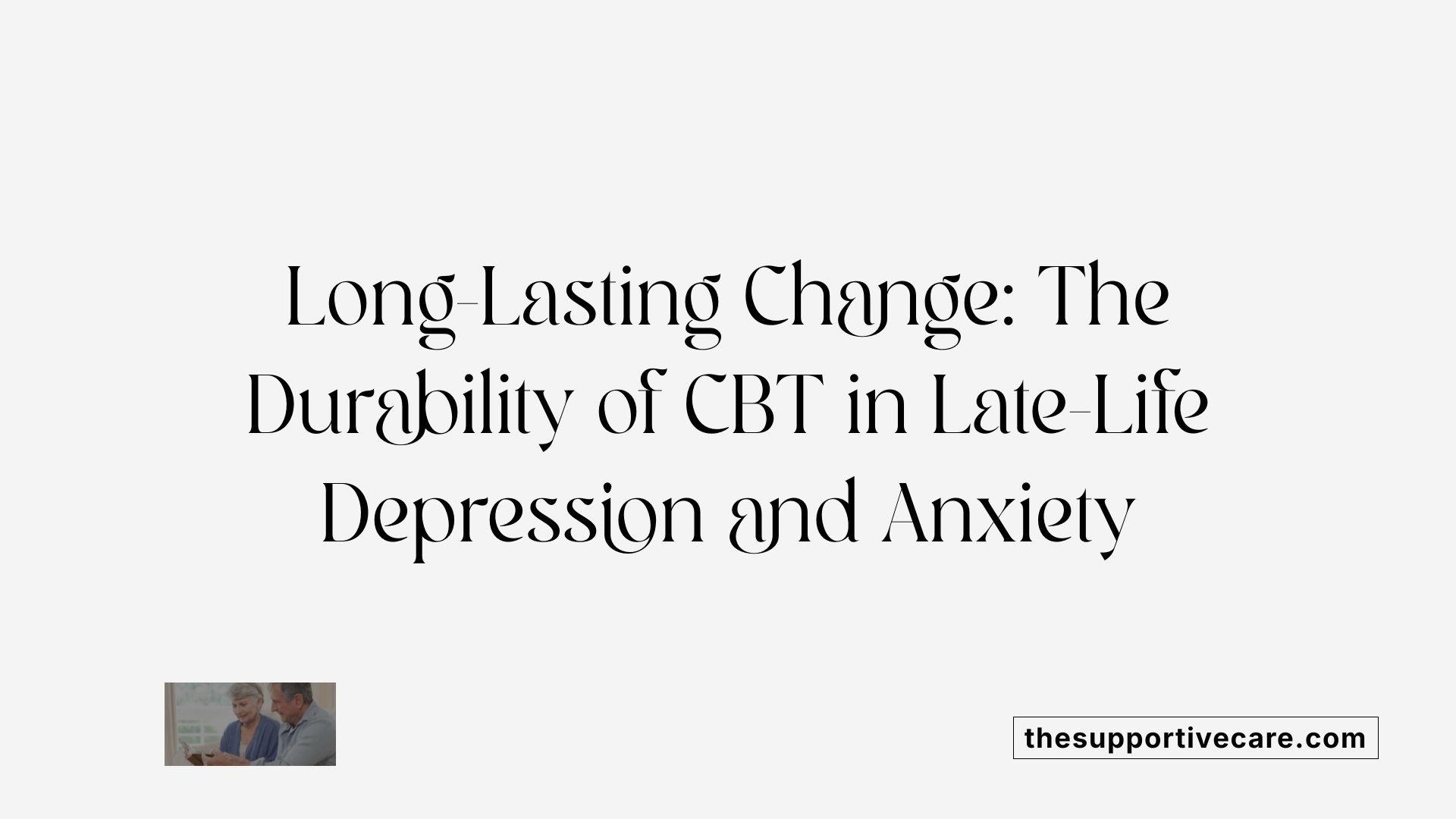
What are the long-term outcomes, remission, or relapse rates of CBT when applied to late-life mental health issues?
Research confirms that Cognitive Behavioral Therapy (CBT) delivers significant and lasting benefits for older adults dealing with anxiety and depression. In a long-term study spanning 10 years, participants who received CBT exhibited notably higher remission rates compared to control groups. Specifically, 58% of individuals in the CBT group achieved remission across all diagnoses, with remission rates for depression reaching 88% and anxiety at 63%. In contrast, the control group showed remission rates of 27% for all diagnoses, 54% for depression, and 35% for anxiety.
The durability of treatment effects is particularly striking. About 68% of those treated with CBT remained in remission after a decade, highlighting its long-lasting impact. Additionally, relapse rates among CBT participants are substantially lower; only 25% to 31% relapse, compared to 50% to 78% in control groups.
An important factor in sustained remission is initial treatment response. Participants who showed no residual symptoms immediately after treatment were 7 to 9 times more likely to stay in remission over the following 10 years. This suggests that early positive response is a strong indicator of long-term stability.
Overall, the evidence underscores that CBT is not only effective in the short term but also offers enduring protection against symptom recurrence in late-life mental health issues. Its capacity to foster sustained remission and prevent relapse supports its critical role in managing depression and anxiety among older adults.
Adaptations and Modifications of CBT for Seniors
Are there specific modifications or adaptations of CBT for older adults?
Cognitive Behavioral Therapy (CBT) has been effectively adapted to meet the unique needs of older adults, ensuring its relevance and efficacy within this population. One primary modification involves addressing typical sensory and cognitive impairments that occur with aging. For example, therapists may incorporate strategies such as using large print materials, auditory aids, or visual aids to accommodate hearing or sight difficulties. When working with clients who have mild cognitive impairment (MCI) or early-stage dementia, behavioral activation techniques are adapted to enhance mood and engagement without overwhelming the individual.
Behavioral activation (BA) is particularly emphasized as a starting point because it involves encouraging participation in pleasant or meaningful activities, helping to reduce symptoms of depression and social isolation. Additionally, many therapists incorporate the Lifeskills approach, an advanced form of CBT that focuses on resilience and building on existing coping strategies. This approach helps older adults recognize their strengths, improve emotional regulation, and foster self-acceptance.
A further adaptation includes integrating life review exercises. These activities involve reflecting on past experiences, which can reinforce a sense of identity, purpose, and continuity. Such exercises also facilitate discussions around age-related themes like loss, aging, and health concerns.
Cognitive screening tools, such as the Mini-Mental State Examination (MMSE), are used to tailor treatment. These assessments inform therapists about the client's cognitive status, allowing for adjustments in session pacing, content complexity, and methods of delivery.
Therapists are encouraged to consider the sociocultural context, intergenerational relationships, and personal values of older clients. Recognizing themes like ageism, health anxieties, and beliefs about capability, therapists can better conceptualize and personalize treatment.
While research supports the effectiveness of these tailored approaches, further studies are needed for populations like the oldest-old (age 85 and above) or those with multiple comorbidities. Nonetheless, the integration of sensory, cognitive, and life-centered strategies ensures CBT remains a flexible, respectful, and effective treatment option for older adults.
Comparative Efficacy of CBT to Other Treatments in Older Adults
How does CBT compare to other therapeutic approaches in treating mental health issues among older adults?
Cognitive behavioral therapy (CBT) has been well-supported by research as an effective modality for treating depression and anxiety in older populations. Numerous studies, including meta-analyses, show that CBT achieves moderate to large effect sizes, often comparable or superior to medications, particularly over extended follow-up periods. This therapy is versatile and can be adapted to meet the specific needs of older adults, including those with mild cognitive impairments or physical health conditions.
Research indicates that the response rates for CBT in older adults are similar to those seen in younger clients, with many experiencing significant symptom reduction and improved self-esteem and emotion regulation. Its focus on changing maladaptive thoughts and behaviors aligns well with the cognitive changes occurring with aging, especially when therapists incorporate strategies such as repetition, summaries, and multi-modal information delivery.
Sessions length and delivery modifications
Traditional CBT sessions vary from 10 to 120 minutes, with most interventions completing within 6 to 24 sessions over 2 to 24 weeks. For older adults, modifications like longer sessions, flexible scheduling, and offering therapy via telehealth or in-home services improve compliance and outcomes. Addressing sensory impairments—using large print materials or assistive devices—and incorporating interdisciplinary support can further enhance engagement.
Response rates and symptom improvements
Studies have reported high response rates, with approximately 39-42% of older adults no longer meeting criteria for their diagnoses after CBT treatment. Response assessments using tools such as the CES-D, PHQ-9, and GAD-7 have shown sustained symptom reductions over time, with effects lasting up to two years. Compared to control groups, CBT recipients are also less likely to relapse, and those with an acute positive response are markedly more likely to maintain remission long-term.
Limitations with cognitive impairments
Despite its effectiveness, CBT's success can be influenced by cognitive status. In cases of severe dementia or high levels of cognitive impairment, standard CBT may require significant adaptation or may be less effective. However, when tailored appropriately—using simplified language, visual aids, and repeated concepts—CBT can still provide benefits to some older adults with mild cognitive impairment.
In summary, CBT offers a comparable, if not superior, alternative to pharmacotherapy and other psychological interventions for older adults. Its flexibility and adaptability make it a highly recommended approach, with benefits sustained over time. Nonetheless, clinicians should consider individual cognitive and physical health when designing and implementing treatment plans.
Special Considerations and Theoretical Foundations of CBT for Seniors
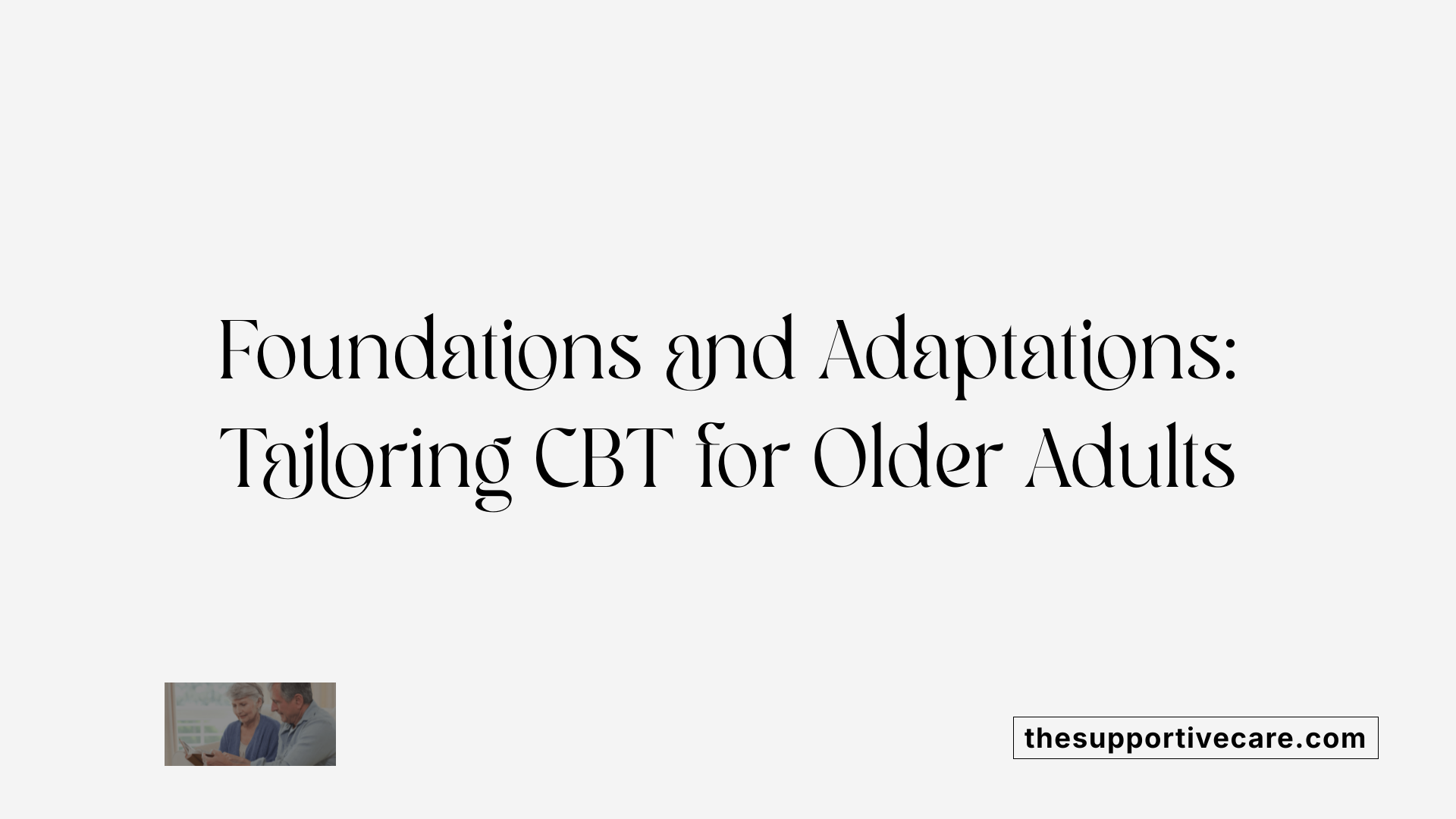
What are some considerations for working with clients with cognitive impairments?
Cognitive and sensory changes that occur with aging can influence how older adults engage with and benefit from Cognitive Behavioral Therapy. High levels of cognitive impairment, such as severe dementia or significant cognitive decline, often result in reduced responsiveness to standard CBT techniques. In fact, fewer benefits are observed when clients have severe depression with psychotic features, intense anxiety with agitation, or untreated sensory deficits.
To address these challenges, clinicians utilize cognitive screening tools like the Mini-Mental State Examination (MMSE) to assess cognitive functioning and determine suitability for traditional CBT. For older clients with mild cognitive impairment or early-stage dementia, adaptations are essential.
These adaptations include simplifying techniques, repeating and summarizing information frequently, and presenting material through multiple modalities such as visual aids, recorded materials, or large-print handouts. Behavioral activation remains a core component, helping improve mood and engagement despite cognitive limitations.
Engaging clients with themes specific to aging—such as loss, health fears, and intergenerational dynamics—is crucial for effective case conceptualization. Incorporating life review and resilience-building activities can enhance therapy outcomes, fostering a sense of mastery and continuity.
How do cohort beliefs and role investments influence therapy?
Older adults’ beliefs about aging, roles, and intergenerational relationships play a significant role in their mental health and therapeutic engagement. Cohort beliefs, which encompass shared attitudes and experiences of a generation, often shape how seniors perceive their problems and the potential for change.
Role investments—such as commitments to family, community, or personal pursuits—affect motivation and goals within therapy. For example, a client deeply invested in their familial role may respond better to interventions that emphasize maintaining or restoring those roles.
Intergenerational links also influence identity and emotional well-being. Recognizing and integrating these themes into therapy can promote acceptance and resilience.
How can therapists address ageist assumptions?
Both therapists and clients sometimes hold ageist beliefs that can hinder therapy progress. Rigidly applying manualized approaches without considering individual differences or assuming decline as inevitable can be counterproductive.
Therapists should challenge ageist assumptions by adopting a strengths-based perspective, emphasizing clients’ resources and capacities for change. Awareness of their own biases is essential to create a respectful, motivating environment.
Addressing ageism includes normalizing aging-related fears while highlighting the potential for growth and adaptation at any age. This fosters empowerment and enhances engagement.
What are some effective case conceptualization models for older adults?
A comprehensive case conceptualization for older clients includes multiple layers:
| Aspect | Description | Purpose |
|---|---|---|
| Cohort beliefs | Shared cultural and generational attitudes towards aging and mental health | To understand clients’ worldview and influence therapeutic goals |
| Role investments | Personal and social roles valued by the client | To identify meaningful activities and motivate change |
| Intergenerational links | Family and social relationships, heritage influences | To incorporate support networks and resolve relational conflicts |
| Sociocultural context | Socioeconomic factors, cultural background, community environment | To tailor interventions respecting clients’ backgrounds |
| Physical health | Medical conditions, sensory impairments, mobility issues | To adapt therapy techniques and address health-related barriers |
By integrating these components, clinicians develop nuanced, individualized strategies that respect the aging process, counteract biases, and enhance engagement. Recognizing age-specific themes and adopting flexible, tailored approaches are essential for maximizing therapeutic benefits for seniors.
Implementing CBT in Care Settings and Overcoming Barriers
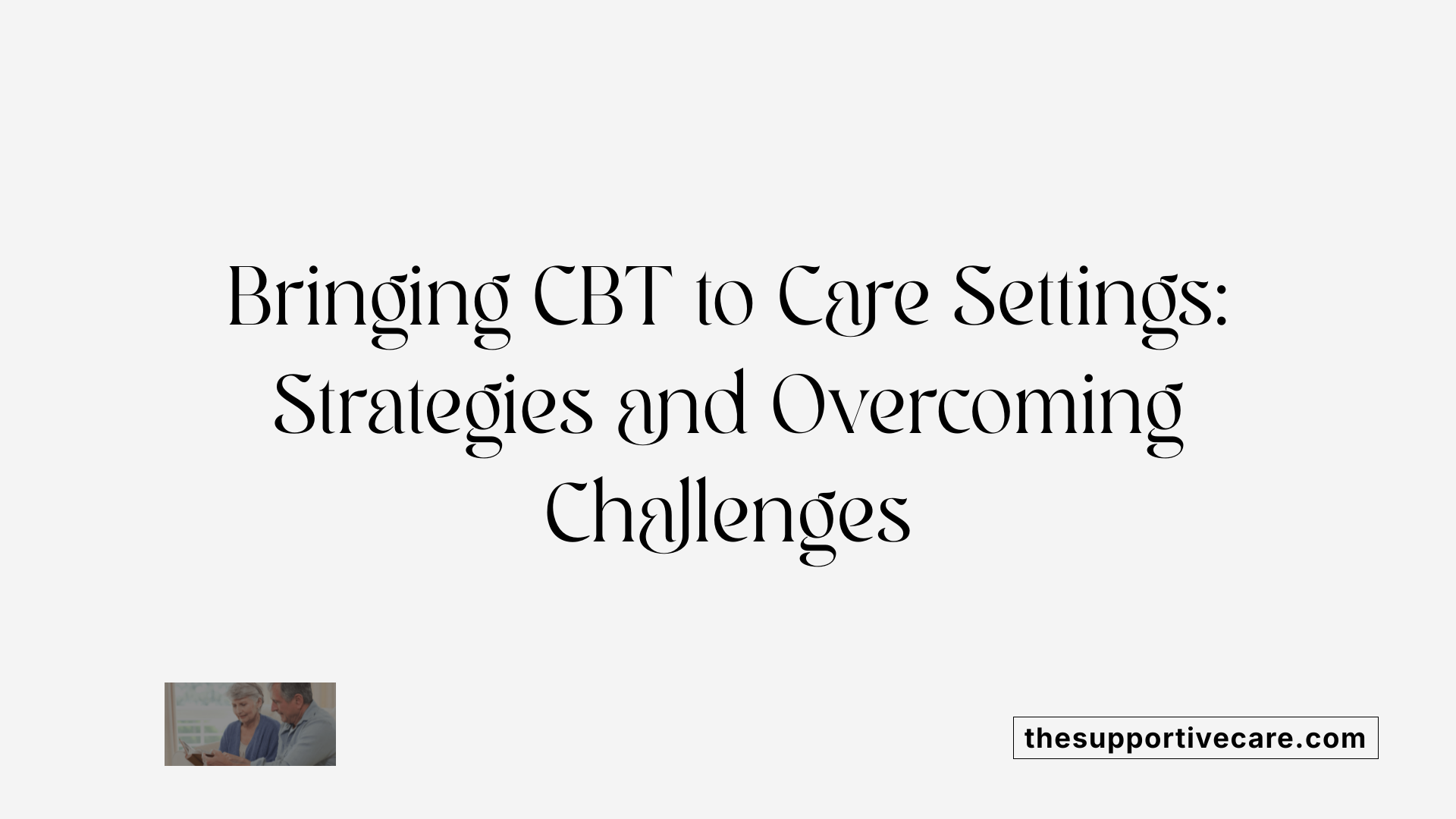
What are some effective ways to implement CBT in residential or care settings?
Delivering cognitive-behavioral therapy (CBT) within residential aged care facilities (RACFs) or community-based environments involves multiple strategic approaches. Therapist training plays a significant role; studies indicate that practitioners with backgrounds in psychology and specialized training tend to implement more effective interventions. Equipping staff with appropriate skills ensures that CBT techniques such as psychoeducation, behavioral activation, and problem-solving are properly delivered.
Flexibility in therapy settings is also crucial. Therapists may conduct individual sessions, group therapies, or home-based interventions to accommodate residents' physical health conditions and personal preferences. Such customization helps facilitate engagement, especially for residents with mobility issues or sensory impairments.
The integration of technology offers additional avenues for delivering CBT. Remote options like teletherapy can significantly extend access, allowing residents to participate without the stress of physical travel. Despite technological advantages, some barriers exist, including cognitive impairments and unfamiliarity with digital tools, which require adaptations such as simplified interfaces or providing technical support.
Residents and staff generally perceive CBT as acceptable and beneficial. Satisfaction levels tend to be high, with reported positive views about the therapy's relevance and effectiveness. However, technological challenges, health issues, and cognitive limitations can affect participation and engagement.
The overall engagement in CBT shows an average uptake rate of approximately 73%, meaning most residents are willing to participate when approaches are appropriately tailored. Nonetheless, attrition remains a concern, with a rate near 20%. To mitigate dropout, ongoing support, session customization, and the involvement of family or caregivers are recommended. These practices help foster sustained participation and improve overall treatment outcomes.
In summary, successful implementation hinges on well-trained therapists, flexible and accessible therapy environments, and thoughtful integration of technology. Emphasizing person-centered approaches and continuous engagement strategies ensures that CBT remains a feasible and effective option for older adults in care settings.
Monitoring Cognitive and Emotional Changes During CBT
How can clinicians monitor changes in cognitive and emotional functioning during CBT?
Monitoring progress in older adults undergoing cognitive-behavioral therapy (CBT) is essential to ensure the intervention effectively addresses their unique needs. Clinicians can utilize cognitive screening tools like the Mini-Mental State Examination (MMSE) on a regular basis. These assessments help gauge the client's cognitive status over time, detecting any decline or improvement that may influence therapy strategies.
In addition to cognitive assessments, adapting to sensory impairments is critical. Practical solutions include the use of hearing aids, large print materials, and tape recorders, which facilitate communication and comprehension during sessions. Addressing sensory challenges helps maintain engagement and ensures that clients can participate actively.
Assessing emotional regulation is another vital aspect. Techniques such as cognitive reappraisal and behavioral activation are aimed at improving mood, resilience, and coping skills. Regular evaluations of emotional states, including mood ratings and social engagement levels, provide valuable insights into the effectiveness of these techniques. Tracking changes in problem-solving abilities and social interactions can reveal improvements in emotional regulation.
By continuously monitoring these areas, clinicians can customize interventions to meet evolving needs, enhance therapeutic outcomes, and address challenges such as cognitive decline or emotional instability. Integrating these assessments into the routine of geriatric CBT supports a responsive, person-centered approach that promotes mental health and well-being in older adults.
The Future of CBT for Aging Populations

What is the future outlook for CBT in older adult mental health care?
The landscape of Cognitive Behavioral Therapy (CBT) for aging populations is poised for significant growth and innovation. Current research underscores its proven effectiveness, particularly for depression and anxiety in older adults. In the future, we can expect an increased integration of technology to enhance accessibility and tailor interventions.
Emerging areas of research include the application of virtual reality environments and telehealth platforms, which can help overcome geographical and mobility barriers. These tools allow for remote participation, personalized exposure therapies, and real-time support, making CBT more adaptable to individual needs.
Moreover, there is a growing focus on customizing CBT approaches to cater to diverse cultural backgrounds and specific medical or cognitive conditions. This involves developing culturally sensitive materials and techniques that respect individual differences
Policy and systemic support will be essential. This includes training clinicians specifically in geriatric mental health, developing standardized protocols compatible with healthcare systems, and ensuring insurance coverage for mental health services tailored to older adults.
Continued research will also explore how to best adapt CBT for those with complex health issues, cognitive impairments, or sensory impairments. Combining CBT with interdisciplinary approaches, including pharmacological and medical treatments, may optimize outcomes.
As the global population ages, the demand for effective, accessible, and adaptable mental health interventions will only increase. Advances in research, technology, and policy are set to make CBT a central pillar in the future of late-life mental health care, supporting older adults in managing psychological disorders with dignity and independence.
Concluding Perspectives on CBT in Geriatric Mental Health
Comprehensive evidence demonstrates that cognitively-behavioral therapy remains a robust, adaptable, and effective intervention for older adults. Long-term data highlight its capacity to foster remission and reduce relapse, even amid cognitive and physical comorbidities when appropriately adapted. Continued research, innovation, and tailored implementation are essential to enhance accessibility and outcomes. Care providers and clinicians should consider CBT as a first-line therapy, integrated with broader health and social support systems, to improve quality of life for senior residents.
References
- Characteristics and effectiveness of cognitive behavioral therapy for ...
- Cognitive Behavioral Therapy for Late-Life Depression
- Long-term remission and relapse of anxiety and depression in older ...
- Efficacy of Internet-Based Cognitive Behavioral Therapy for ...
- Do older adults respond to cognitive behavioral therapy as well as ...
- An umbrella review of physical-activity therapy and cognitive ...
- Remote cognitive behavioral therapy for older adults with anxiety ...
- Characteristics and effectiveness of cognitive behavioral therapy for ...
- Characteristics and effectiveness of cognitive behavioral therapy for ...
- The Efficacy of Cognitive Behavioral Therapy on Mental Health, Self ...
